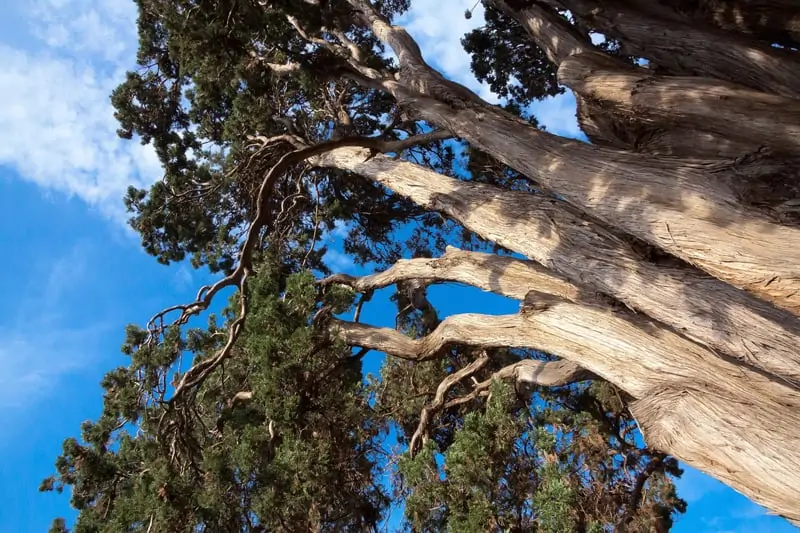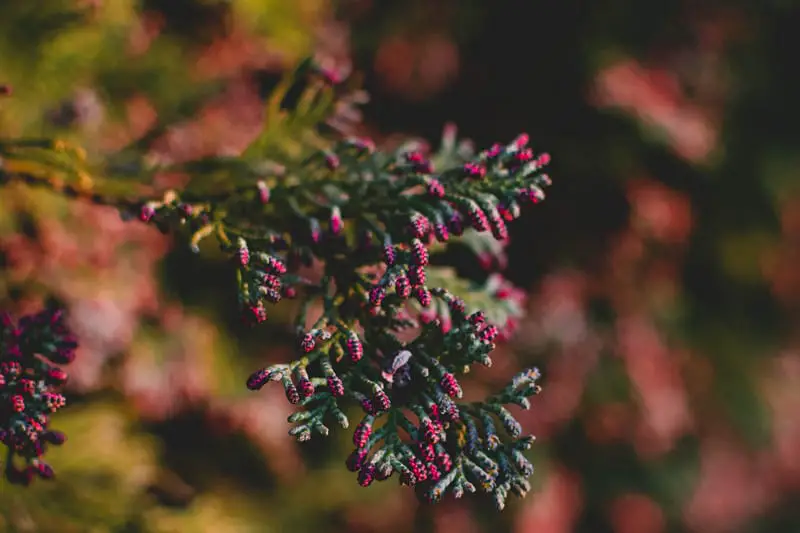Table of Contents
Different varieties of the Cupressus Bonsai have long been a favorite among bonsai fans and enthusiasts. If you have always wanted to grow one, now might just be the perfect time to do so. Read on below to know more about these gorgeous bonsai trees.
| Species | Cupressaceae |
| Average Height | 50.00 to 80.00 feet |
| Average Spread | 20.00 to 30.00 feet |
| Origin Countries | Central America, Western North America, Northwest Africa, the Himalayas, the Middle East, Southern China, Northern Vietnam |
| Flower Bloom Time | Non-flowering |
| Flower | Non-flowering |
| Water | Medium |
| Sunlight | Full Sun |
| Maintenance | Medium |
Can we bonsai Cupressus tree?

Yes, you can bonsai the Cupressus tree.
Cupressus, specifically Cupressus macrocarpa, is a favorite bonsai variety. There are also other Cupressus species that you can bonsai, including the bald and Italian cypress species. They have easy-to-maintain conical shapes, and branches can also be pinched to retain their pyramid styles. Cupressus bonsai trees are also perfect for smaller spaces.
Cupressus bonsai history
Many people agree that the Cupressus bonsai is one of the most suitable plants for beginners that let them try their hands at growing something green. Various Cupressus varieties have long been cultivated as bonsai trees.
Cupressus bonsai scientific name
The scientific name of Cupressus bonsai is Cupressus.

Cupressus bonsai care
As stated earlier, the Cupressus bonsai is ideal for all beginners to let learn and master the basic techniques for caring for bonsai trees. Cupressus bonsai has delicate barks that will train your hands on how to be precise and gentle when training or pruning a bonsai tree. Tight wires and cuts may also leave marks on branches and may cause discoloration on the bark later on. Without proper care, you might end up disfiguring your Cupressus bonsai.
Cupressus bonsai temperature
The Cupressus bonsai needs a consistent climate, usually hot summers, to achieve the best growth. While this bonsai tree can still grow even in cooler regions, many owners noted that the maturing process has been slower.
The deciduous tree tends to be healthiest if kept outdoors throughout the year. When winter comes, it is important to insulate the tree roots with sufficient coverage for the needles and leaves, making sure that the plant is protected from both the wind and extremely cold temperatures.
There are people who resort to a cold frame or shades to offer protection to the tree during the dormancy period. Don’t forget that the tree needs the sun and that you should also provide it with adequate moisture.
Cupressus bonsai fertilizer
Fertilizing your Cupressus is simpler than that of other types of bonsai trees. You can feed it just once a week during spring and reduce it little by little to just once every two weeks in late spring to fall. To make sure that your tree also goes dormant right on time, you shouldn’t feed it from late fall to the earlier part of the winter months. It will help your tree to go to dormancy until the next spring season comes.
Some owners prefer using acidic fertilizer that can either be in the usual or liquid form. It is also recommended to start fertilizing the tree as soon as it starts budding that often happens within 4 to 6 weeks from repotting.
Cupressus bonsai fertilizer ratio
As mentioned above, there is no need for you to fertilize your Cupressus bonsai too often. Most of the time, just a single feeding in spring is already enough to promote a new flush of growth. You can try using a slow-release 20-20-20 fertilizer, or 20% nitrogen, 20% potassium, and 20% phosphorus, right before new growth starts showing up.
Cupressus bonsai pruning/trimming
Before you start to prune your tree, it is recommended to ensure that its trunk has already developed well enough. It is important to prevent a straggly appearance later on. This kind of bonsai tends to grow fast in swampy soil and warm climates.
The main objective here is to allow the trunk to develop and grow thick before you cut it back. Keep in mind that the Cupressus plant tends to grow fast, so you should always watch it over after wiring it. It is because as the branches and trunk grow, the wires will also tighten, eventually causing damages to the bark if you don’t keep an eye on it.
How to trim a cupressus bonsai
- Use a raffia twine to tie down the branches. You can tie the other end to the trunk’s base or at the tip of the branch that you want to pull down.
- If the branch you like to pull down is already too thick, this can be solved by creating a V-shaped incision at the limb’s underside, particularly at the part where it joins the trunk.
- This incision will close while the branch gets pulled down. Don’t worry since this cut can heal right away.
- Pinch back new growth to shape the foliage. Let the branch grow thick if you like. You can leave it for a single season then cut it back the next spring. The good news is that new growth is going to sprout at the part of the latest pruning.
- The twigs of Cupressus bonsai sprout in acute and sharp angles that make it easy to form a branch with a gnarled appearance.
- It is recommended to prune in summer and shape it later before dormancy. You can pluck the leaves growing from the trunk, except if you wish to grow it further into a branch.
- The best way to tell that your Cupressus bonsai has already matured is when you notice its “knee.” It develops by going through 3 years without root pruning or changing the pot.
- The tree will form a root-bound situation where most of the roots will have bent almost double. Bring one of the doubled bends up towards the surface carefully before you allow it to protrude through the moss cover to develop a knee.
- The Cupressus bonsai is often styled into an informal upright, formal upright twin-trunk, and the group style or also called the bonsai forest.
Cupressus bonsai repotting
You should only change the pot of your Cupressus bonsai and prune its roots in spring, which is the time when the tree produces small green nubs on its branches and trunk. If your goal is to keep your tree in standing water, you should only prune the roots once annually or at least once every couple of years.
Compact mushroom compost, a heavy soil, is the best type of soil to use for this method. If you don’t keep your bonsai in water, your best choice is still heavy soil since the tree relies on the soil to acquire and retain most of the moisture. You don’t have to worry that the roots of your Cupressus bonsai will rot in water since it is impossible.
Cupressus bonsai pests and diseases
All in all, the Cupressus bonsai is a quite hearty and resilient tree. In fact, it also has remarkable resistance to insect attacks. Twig blight is the only thing you should watch out for that is the result of a weak pathogen that can sometimes be found in dying and dead plant tissue. It can stress out the tree, followed by the death of the branch tips because of the fungus.
To prevent this from happening, all you have to do is prune the dead tips and get rid of any diseased or dead tree branches. Depending on your chosen Cupressus variety, proper care will lead to tall and large trees with vigorous root growth.
Cupressus bonsai soil
Cupressus bonsai trees thrive well in well-drained heavy clay, medium loamy, and light sandy soils. This also grows even in nutritionally poor soil. Moist and dry soil is recommended for these trees. Cupressus bonsais can also tolerate severely dry drought conditions, and grow in alkaline, neutral, and acid soils.
Cupressus bonsai watering
This native of swampy and wet soils makes the Cupressus a great option for owners who want to enjoy taking their time as they water their plants. While other bonsai varieties may die because of too much water, the Cupressus bonsai will be grateful instead.
When watering a Cupressus tree, begin from the top, mimicking the falling of rain. Fill water in the pot to its rim, particularly during summer. This is the time when you should water your tree two times a day. You might also want to keep its pot submerged up to the rims during the summer months since it will give the roots more freedom to travel.
Cupressus bonsai sunlight requirements
The Cupressus bonsai is sensitive to any amount of shade. The plants crave sunlight and warmth. If you will grow the plant outdoors, see to it that you grow it in a warm spot. A sunny location is also important if you will grow it indoors. You have to turn its container regularly to ensure that all sides get sufficient sunlight. The tree requires a minimum of 6 to 8 hours of light daily.
Your bonsai’s temperatures can be dropped in the winter but make sure you don’t go overboard. You can try dropping the thermostat to about 60 degrees that mimics the dormant period outdoors without being too cold to the point that the tree ends up suffering.
Cupressus bonsai types

As mentioned earlier, there are several types of Cupressus bonsai that you can try growing, and some of these are the following:
Cupressus macrocarpa bonsai
This bonsai type not only has elegant foliage and interesting and attractive roots because it also gives off an enjoyable aroma.
Cupressus sempervirens bonsai
This type is among the easiest and best trees to bonsai. You can grow it in a small pot, trim the roots regularly, and pinch the tree back.
Cupressus goldcrest bonsai
This is a lush evergreen conifer hedging plant that has an upright and solid form. It has golden, lime-green, bright foliage with a pleasing lemon scent.
Cupressus torulosa bonsai
This is an evergreen tree with a broadly conical to large oval crown. It has thick brown or grey-brown bark that peels off in longitudinal strips.
Cupressus arizonica bonsai
It has black-brown or gray furrowed bark. Its branches spread horizontally with a broadly conical crown. It also has short four-sided thick shoots that spread in all directions.
Cupressus lusitanica bonsai
Cupressus lusitanica is a type of evergreen tree with a cone-shaped dense crown. It has scale-like leaves of yellow-green to dark-green color.
Cupressus leylandii bonsai
This Cupressus variety grows best in full sun in well-drained, fertile, moist soils. It tolerates many soil varieties and takes well to shearing and pruning.
Cupressus bonsai growth rate
Cupressus bonsai varieties have a fast growth rate that varies depending on how well you take care of your tree. You also need to remember that the growth rate is also dependent on the specific cultivar you use. For your bonsai to grow faster, looking after it properly will always be the best thing you can do.
Can I bonsai cupressus indoor

You can bonsai your Cupressus indoor but just remember that it needs a sunny spot. You also need to regularly turn the container to ensure that both sides receive enough sunlight. You also need to give it a minimum of 6 to 8 hours of light a day.
How to bonsai a cupressus tree
It is relatively simple and easy to germinate and grow a Cupressus bonsai tree. Here are the steps you need to follow:
- Sow the seeds in warm water within 24 hours.
- Completely drain off the water, place the seeds inside a freezer bag, and put it in the refrigerator. A small amount of vermiculite bonsai soil can be used before placing the seeds inside the freezer bag to help with moisture retention. The recommended duration and temperature for the treatment must be 4 weeks at 4 degrees Celsius.
- When the seeds are sown ready, prepare your plant container and fill it with moist and well-drained potting compost. Plant pots, plug trays, seed trays, or DIY containers that have drainage holes can be used for this.
- Sow the Cupressus seeds on the soil’s surface and cover them with a fine layer of sieved vermiculite or compost.
- Water the soil gently and maintain them at room temperature. Make sure you provide them with a high humid condition as much as possible.
- The germination process will begin after several weeks of sowing. Full sun is required for the seedlings to grow. You can place them outside after 2 to 3 years of growth.
Propagating your new Cupressus bonsai tree
Both hardwood cuttings and seeds can be used for propagating your Cupressus bonsai. It is easier to root and grow into trees the hardwood cuttings that are taken during winter. While germinated seeds are also a possible option, the process may require more effort and time on your part.
Wiring and pruning your new Cupressus bonsai tree
Being a low-maintenance tree, Cupressus bonsai requires minimal pruning. The best time for pruning and training the branches of the species is during fall or early spring. Just be careful not to prune the shoots too early because it might result in die-back in the fall. You can shorten and prune the new shoots once your notice that they started to produce lateral ramification.
Unwiring and wiring of your Cupressus bonsai can be performed at whatever time of the year it might be. See to it that the tree doesn’t stay wired for over 2 to 3 months, though. The period might even get shorter throughout the growing seasons. Wiring the tree for an extended period may lead to its semi-permanent scarring. Avoid wiring or unwiring while the bark is still wet since it can end up damaging the bark.
Repotting your new Cupressus bonsai
If you placed your Cupressus bonsai in a small pot, you might need to repot it every 6 months. When the tree begins to grow, you can repot it every 2 to 3 years. The best time to repot is in spring. Repotting younger trees must be done in autumn and spring. Just make sure that you don’t repot on a hot day and out of season, and always avoid any direct sunlight when repotting your bonsai tree.
is Cupressus bonsai toxic to pets
It seems that most varieties of Cupressus are not toxic to pets. However, there is a new manmade hybrid, the Cupressus leylandii, that may pose a bigger threat to animals, particularly dogs and horses, that tend to try to eat its leaves.
To keep both your bonsai and your pets safe, it is best to ensure that you keep the tree out of your pet’s reach. This is the simplest and easiest way to ensure that no animal will end up munching on your Cupressus that may lead to some unwanted incidents that might compromise your pet’s health and safety.
![Pittosporum Bonsai [Pittosporum Tobira]](https://www.bonsai-express.com/wp-content/uploads/2022/05/Pittosporum-Bonsai-365x200.jpg)
![Sorbus Bonsai [Sorbus Aucuparia]](https://www.bonsai-express.com/wp-content/uploads/2022/05/Sorbus-Bonsai-365x200.jpg)
![Tsuga Bonsai [Tsuga Canadensis]](https://www.bonsai-express.com/wp-content/uploads/2022/05/Tsuga-Bonsai-365x200.jpg)
![Tamarix Bonsai [Tamarix Ramosissima]](https://www.bonsai-express.com/wp-content/uploads/2022/05/Tamarix-Bonsai-365x200.jpg)